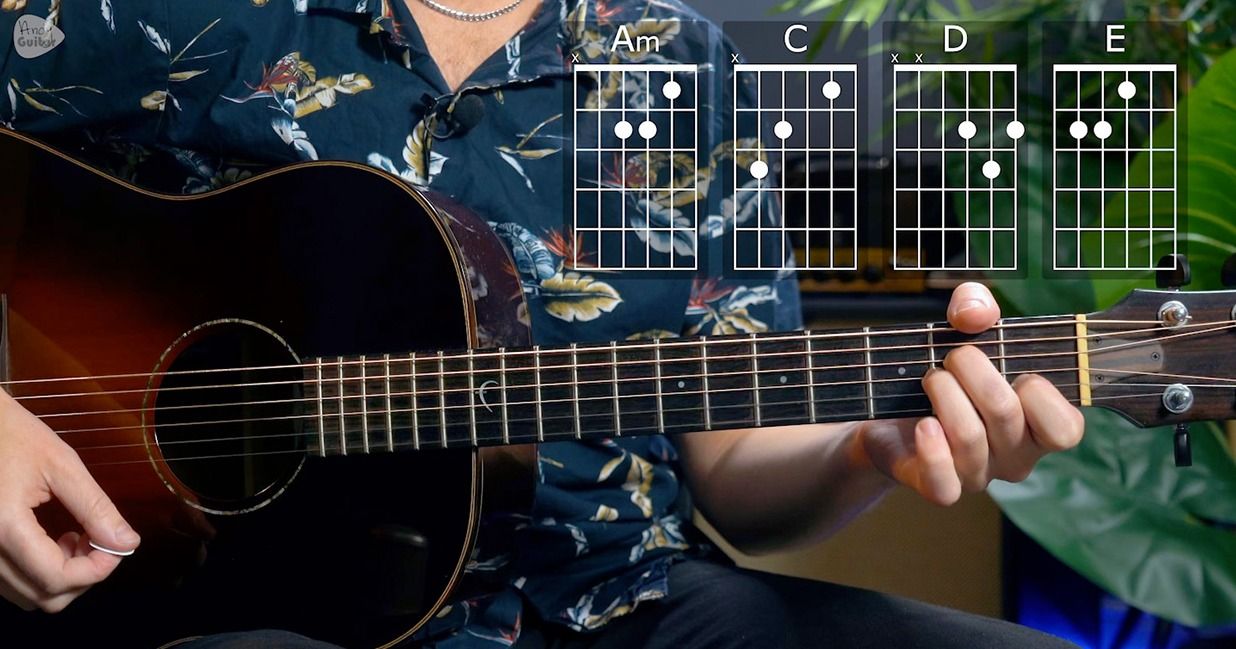In this video
We’ve covered Major keys a lot in this course, but what about common Minor keys?
Blues and Rock songs often feature riffs based on the A minor pentatonic scale, for example in a 12 bar blues. That is because they often use power chords, which are ambiguous of the major/ minor.
Relative major/ minor scale and key
Two classic examples below - you can find any relative major/minor just 3 frets from each other.
C major - A minor
G major - E minor
Chords in C major
C - Dm - Em - F - G - Am - C/B (Bdim)
Chords in A minor
Am - Bdim - C - Dm - Em - F - G
Notice how C major and A minor have relative chords
Common chord substitutions - Why?
C major and A minor share the same chords (including Em).
E major is not naturally part of C major or A minor, but it appears frequently in minor key songs because of the A harmonic minor scale, which raises the 7th note (G to G#), turning E minor into E major.
This creates a strong dominant-tonic relationship (V-I) between E major and A minor, providing the tension and resolution that makes the progression musically satisfying.
I hope this clears up why E major appears in songs like "House of the Rising Sun"! It’s a fascinating example of how minor keys are often altered for musical effect.

